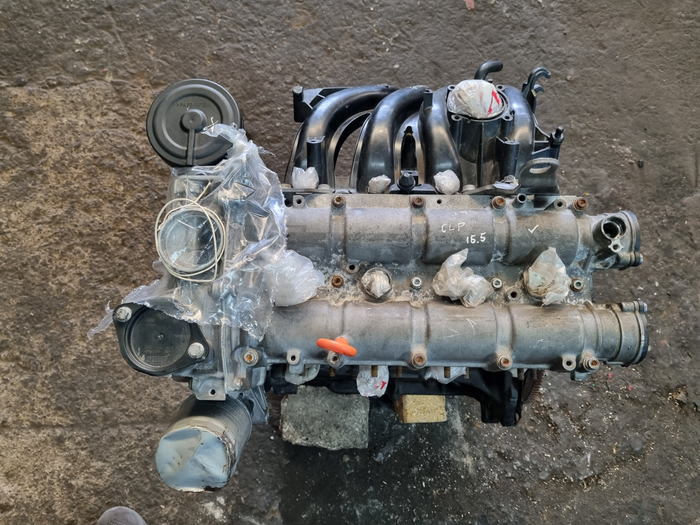The Function of a Clp Engine in Revolutionizing Engine Performance and Sustainability
The introduction of CLP engine technology presents a critical moment in the auto industry, where performance and sustainability converge in extraordinary methods. By optimizing combustion procedures and permitting for dynamic modifications in compression ratios, these engines not just promise improved gas efficiency and minimized exhausts however also challenge standard engineering paradigms.
Understanding CLP Engine Innovation
As the auto market consistently seeks cutting-edge solutions to improve effectiveness and efficiency, recognizing CLP engine innovation comes to be important. The term CLP means Compression-Low Stress, an innovative engine style that concentrates on maximizing combustion procedures and reducing exhausts. This innovation operates by preserving a low-pressure atmosphere within the combustion chamber, which assists in a more full gas melt and decreases unburned hydrocarbons.
Among the vital functions of CLP engine modern technology is its capacity to readjust the compression ratio dynamically. This flexibility allows the engine to operate efficiently across different driving conditions, enhancing fuel economic situation while simultaneously enhancing power result. Furthermore, CLP engines leverage progressed products and layout principles to reduce weight and thermal losses, even more adding to general efficiency.
Moreover, the assimilation of electronic control systems plays a vital function in handling the engine's efficiency parameters. These systems allow real-time adjustments to ignition timing and gas shot, optimizing burning for both power and performance. By recognizing CLP engine innovation, stakeholders in the auto sector can better appreciate its possibility in driving the future of engine style, performance, and sustainability.
Performance Enhancements Offered
CLP engine modern technology provides significant performance enhancements that set it in addition to traditional engine layouts. One of the main benefits of CLP engines is their capacity to operate successfully across a broader variety of rates and loads. This adaptability equates into enhanced torque shipment and acceleration, supplying a more responsive driving experience.
Furthermore, the sophisticated burning procedure utilized in CLP engines enhances fuel-air mixing, resulting in higher thermal efficiency. This improvement not only makes the most of power outcome however also decreases energy loss, causing an engine that executes better under various problems.
Moreover, the modular style of CLP engines enables much easier assimilation with crossbreed systems, enhancing their efficiency potential - clp engine. This versatility makes it possible for suppliers to design automobiles that satisfy customer requirements without compromising dexterity or power
The precision engineering associated with CLP innovation also adds to reduce friction and wear, improving engine long life and reducing the regularity of upkeep. In general, these performance enhancements position CLP engines as a leading option in the quest of high-performance, dependable, and functional engine solutions.
Ecological Advantages of CLP Engines
Among one of the most engaging advantages of CLP engines depends on their ecological benefits, which are progressively vital in today's automobile landscape. These engines are developed to maximize fuel effectiveness, considerably minimizing carbon exhausts contrasted to traditional burning engines. By utilizing advanced combustion techniques and innovative products, CLP engines promote cleaner exhaust results, adding to improved air top quality.
Furthermore, the reduction in fuel intake not only results in lower greenhouse gas exhausts however likewise preserves important natural deposits. As fossil gas reserves dwindle, the change in the direction of CLP technology stands for a calculated relocation in the direction of sustainability. The engines are frequently compatible with alternative gas, additionally improving their ecological charm and enabling a diversified power profile.
Moreover, the light-weight layout of CLP engines aids reduce car weight, which in turn minimizes the energy required for propulsion. This leads to lower operational power her response consumption and a lessened ecological footprint. In summary, CLP engines stand at the forefront of initiatives to minimize climate modification and promote lasting methods in the automobile sector, personifying a future where efficiency and ecological duty are not mutually exclusive.
Contrast With Typical Engines
While traditional engines have long controlled the vehicle market, the intro of CLP technology offers a substantial shift in efficiency and performance. Conventional internal burning engines primarily rely upon gas burning, which not only restricts thermal efficiency however additionally adds to greater emissions. In comparison, CLP engines employ sophisticated thermal monitoring and a special combustion process, enhancing fuel effectiveness and substantially minimizing greenhouse gas exhausts.
Additionally, standard engines operate set power contours, which can prevent performance in varying driving conditions. CLP engines, however, are created to adjust their performance dynamically, supplying optimal power delivery based upon real-time demands. This adaptability causes enhanced acceleration, responsiveness, and general driving experience.
Upkeep additionally differs substantially; standard engines commonly call for constant oil modifications and element replacements because of deterioration. clp engine. CLP engines, with less relocating parts, assure minimized upkeep needs and longer functional life expectancies

Future Prospects and Innovations
As the automotive landscape evolves, the future of engine modern technology is significantly concentrated on advancements that improve performance and sustainability. The Clp engine, with its distinct style and operational efficiencies, is positioned to play a crucial function More Info in this improvement. Future growths might involve improvements in materials scientific research, allowing the construction of lighter and much more durable elements, therefore decreasing overall vehicle weight and improving gas performance.
In addition, the assimilation of artificial intelligence and equipment knowing into engine administration Learn More Here systems is expected to enhance efficiency dynamically, permitting real-time changes based on driving problems. These advancements can further minimize discharges and enhance energy utilization.
Additionally, study right into alternative gas, consisting of hydrogen and biofuels, offers amazing opportunities for Clp engines, lining up efficiency with environment-friendly campaigns. clp engine. As regulatory structures come to be stricter, the fostering of such technologies will be critical in attaining sustainability objectives without compromising power
Final Thought
